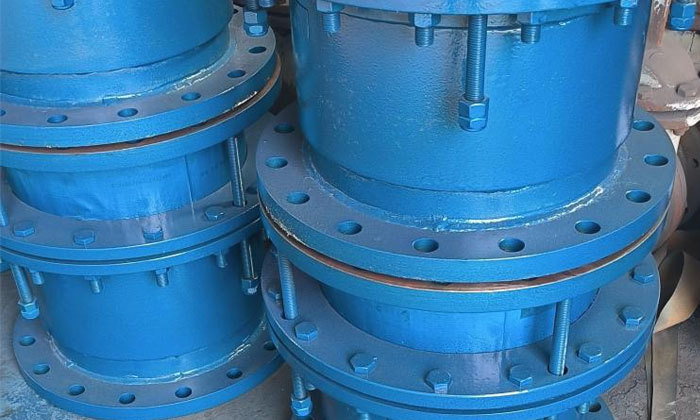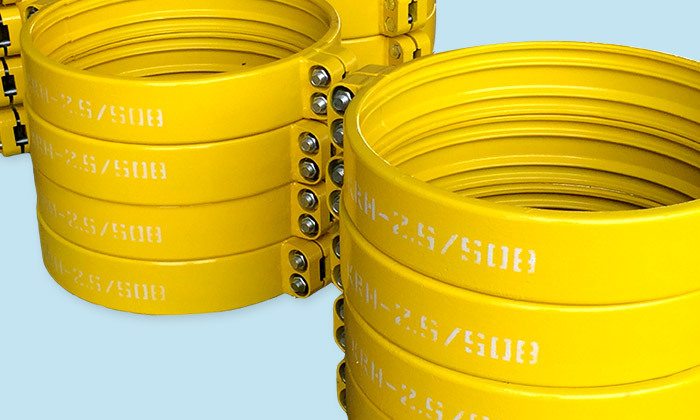Products
Pipe Fitting Series
- All
- Product management
- News
- Introduction
- Company locations
- FAQ
- Company videos
- Company Brochure
Clamp-type flexible pipe joints are used for connecting steel pipes. The KRH and KRJ series forged clamp-type flexible pipe joints are patented products of our company. They have a unique air-sealed principle, a unique C-type rubber sealing ring, and a unique connection method, giving them a triple sealing effect:
a. First Seal
The rubber sealing ring itself has self-tightening properties and relies on its own elasticity to press tightly against the pipe;
b. Second Seal
After tightening the bolts on the outer pipe clamp, the rubber air seal ring will be further compressed;
c. Third Seal
When there is pressure in the pipeline, the pressure will apply pressure to the C-shaped lip of the sealing ring from the inner cavity, making the rubber sealing ring press more tightly against the pipe. The higher the pressure, the better the air sealing performance.
Realization of the Angle of the Clamp-type Flexible Pipe Joint:
Since the outer metal pipe clamp of the clamp-type flexible pipe joint does not tightly adhere to the pipe and has a reasonable gap with the pipe, the pipe can be rotated to a certain angle.
Realization of Expansion and Contraction of the Clamp-type Flexible Pipe Joint:
The structure of the clamp-type flexible pipe joint allows each pipe joint to achieve a certain degree of expansion and contraction. The amount of expansion and contraction can be adjusted according to specific needs and different models.
Clamp-type flexible pipe joints are widely used in power plant ash handling systems, mine tailings systems, and wastewater treatment, chemical, and papermaking industries. They can effectively compensate for thermal expansion and contraction caused by temperature changes in the pipeline system, and can also compensate for angular changes caused by pipeline foundation settlement. They are high-pressure resistant, easy to install, and have a much better overall cost-effectiveness than flange connections.













